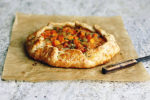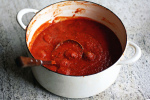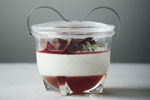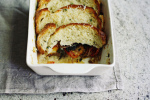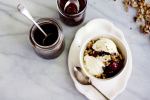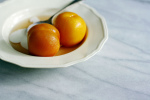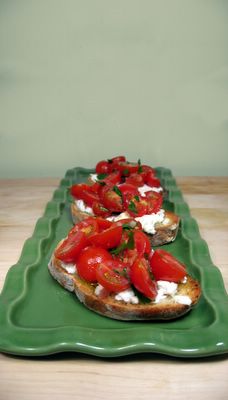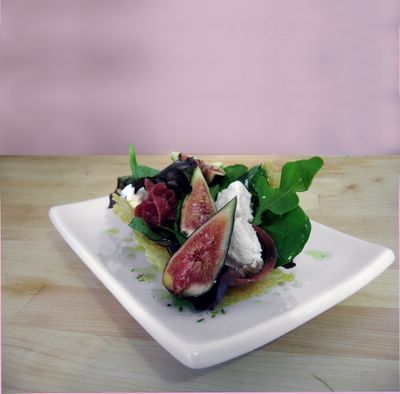From the produce section, with love
 Wednesday, November 23, 2005 at 3:03PM
Wednesday, November 23, 2005 at 3:03PM When my brother and I were growing up, I do not remember having an option when it came to vegetables. Wait, I should clarify. It was not that there was a lack of variety in the vegetables placed before us, it was that we were never really given the option of trying them or not – we just did. We ate everything.
I’ll admit my Mother may be the better resource on this, but I do not remember there ever being a vegetable my brother or I would simply not eat (sure, there were ones that were not favourites). I recall being aghast when watching television and witnessing kid surreptitiously hide some Brussels sprouts in a napkin.
The thought had never dawned on me – I mean, why would anyone not want to eat a Brussels sprout? It was a completely foreign concept to my 7-year-old brain. Admittedly, our cocker spaniel did love corn, so he would have probably appreciated any scraps had we been willing to part with them.
We were lucky to be exposed to a wide array of vegetables, from a young age. We happily gobbled up steamed broccoli, curried cauliflower, peas in our aloo (potato) subsi, okra, spinach, beans of all sort, along with pulses and lentils. We even knew the three sides to one of our favourites — a vegetable that could be an aubergine when my grandmother was cooking, then transform itself into eggplant parmigiana at our neighbour’s house, and still be called baigan and brinjal when my Mom or Dad made Indian food.
My love for vegetables has carried me to adulthood, as I’ve expanded my repertoire to include new preparations and cooking methods. Nothing is better come springtime than roasted asparagus, more welcomed in summer than marinated salads, or more comforting in winter than braised leeks served alongside grilled meats.
S, on the other hand has not always been keen on our leafy and tuberous friends. Up until a few years ago, I could not even convince him that the noble onion was something that should pass his lips now and again. Luckily for me, a sojourn in some far-off lands opened up his culinary horizons and he is now my willing taste-tester. Though I’ll admit, I’ve not yet heard him say he ‘craved’ a vegetable – but I’m sure we’re on our way.
The many-named eggplant has been a perennial favourite, so when it came to deciding on what to make this past weekend, it was the obvious choice. Roasted in the oven, then used to top crunchy layers of puff pastry and a silky, rich filling of onions and herbed chèvre, the flavours were pronouncedly fall and the balance of textures exactly what I was looking for.
I sent one of these tarts to my parents this week; I hope they consider it a small thank you for all those years of ‘forcing’ me to eat my vegetables.
Roasted eggplant tart, with caramelized onions and chèvre
1 large globe eggplant
1 sheet puff pastry, thawed as per package instructions
2 small onions, halved and then sliced finely
100 g (3 oz) chèvre, softened and divided
100 g (3 oz) cream cheese, softened
2 tablespoons mixed fresh herbs (or more to taste), I used chives, parsley and thyme
5-10 cloves garlic, roasted and crushed into a paste
Salt and freshly ground pepper
Olive oil
Preheat oven to 425º F (220º C).
Slice eggplant into 1/2" rounds. Toss with olive oil, salt and pepper. Place in a single layer on a baking sheet and roast for 12 minutes. Turn the slices and roast for another 12 minutes, until lightly golden and soft. Alternatively, you can sauté the slices over medium heat. Set aside.
Reduce oven temperature to 400ºF (200º C).
On a floured surface, roll out the puff pastry to16”by 10”, trim any edges to form a neat rectangle. With a paring knife, score a 1” border around the edge of the pastry. Place on baking sheet. Prick (dock) the interior of the rectangle all over with a fork, to prevent excessive rising. Bake for 15 minutes, or until an even pale golden brown. Depending on your oven, you may need to rotate the pan halfway through the baking. Set aside on rack to cool (do not remove from baking sheet).
Meanwhile in a small saucepan with a tight-fitting lid, sauté the onions along with 1 teaspoon of salt. After the onions have become translucent cover and continue to cook, stirring frequently, for 15 minutes or until caramelized. Remove from heat, uncover and allow to cool.
In a small bowl, blend together half the chèvre, all the cream cheese and the herbs. Depending on the type used, you may need to loosen the mixture with a teaspoon of olive oil. You are looking for a lightly whipped, spreadable consistency. Season with salt and pepper, and set aside.
Being careful not to crush the pastry, spread the garlic paste over the crust. Top with the cheese mixture, followed by the caramelized onions. Arrange roasted eggplant over the onions and top with the reserved chèvre. Drizzle with a bit of olive oil, if desired.
Bake for 10 minutes, or until cheese starts to brown and the eggplant is warmed through. Can be eaten warm or at room temperature.
Serves 4.
Notes:
• For the ruffled effect shown with the puff pastry, I used a removable-bottomed tart pan with a fluted edge.
• Lemon zest and/or juice are welcome additions to the herbed cheese mixture.
• Any roasted vegetable would be excellent with this combination; tomatoes, zucchini or mushrooms are all suitable.
• Omit the chèvre and substitute an equal amount of a blue cheese for the filling.


